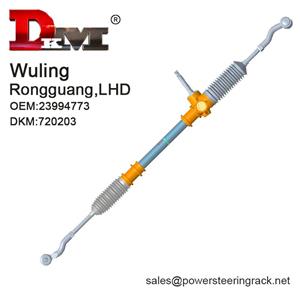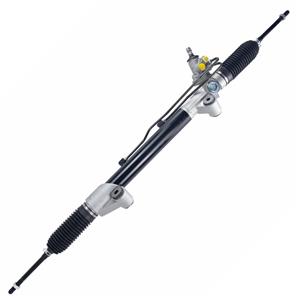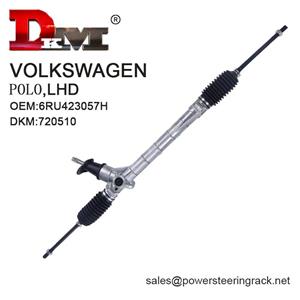How do I know if my power steering rack end needs to be replaced?
The power steering rack end is a vital part of the car's steering system. It is responsible for transmitting the rotational force of the steering wheel to the wheels, allowing the driver to easily steer the vehicle. During long-term use, the power steering rack end may become worn, loose or damaged, which will not only affect the vehicle's handling, but may also cause more serious steering system failures. Knowing how to determine whether the power steering rack end needs to be replaced can help car owners detect problems early and take appropriate repair measures to avoid unnecessary safety hazards and economic losses.
This article will start with the working principle of the power steering rack end, analyze its common fault symptoms, and introduce how to determine whether it needs to be replaced, so as to help car owners know when to take action to repair or replace the rack end.

What is the function and composition of the power steering rack end?
The power steering rack is one of the core components of the modern car steering system. It reduces the driver's force when steering the steering wheel through the effect of hydraulic or electric power assistance. The main function of the steering rack is to transmit the rotational force of the steering wheel to the wheels so that the vehicle can steer according to the driver's instructions.
1. The role of the rack end
The rack end is usually composed of several important parts, the most critical of which is the end part that connects to the steering system. This end is the connection point between the rack and the steering shaft or steering gear, and is directly responsible for transmitting the movement of the steering system to the front wheels of the vehicle. Over time, this end is subject to greater wear and stress, and if there is a problem, it may cause inaccurate steering or steering wheel failure.
2. The composition of the power steering rack
The composition of the power steering rack is relatively simple, but the part that has a greater impact on its performance is usually the end component. The rack end generally includes:
● Rack end cover: This is a component used to protect the end of the rack and maintain the stability of the system.
● Seals and gaskets: These components help maintain pressure in the hydraulic system and prevent lubricating oil or hydraulic oil from leaking.
● Connection end: The connection point between the power steering rack and other steering system components, such as the components connected to the steering gear and steering column.
The working condition of these components directly affects the performance and reliability of the power steering system. If the rack end is worn or damaged, the overall performance of the steering system may be affected or even fail.
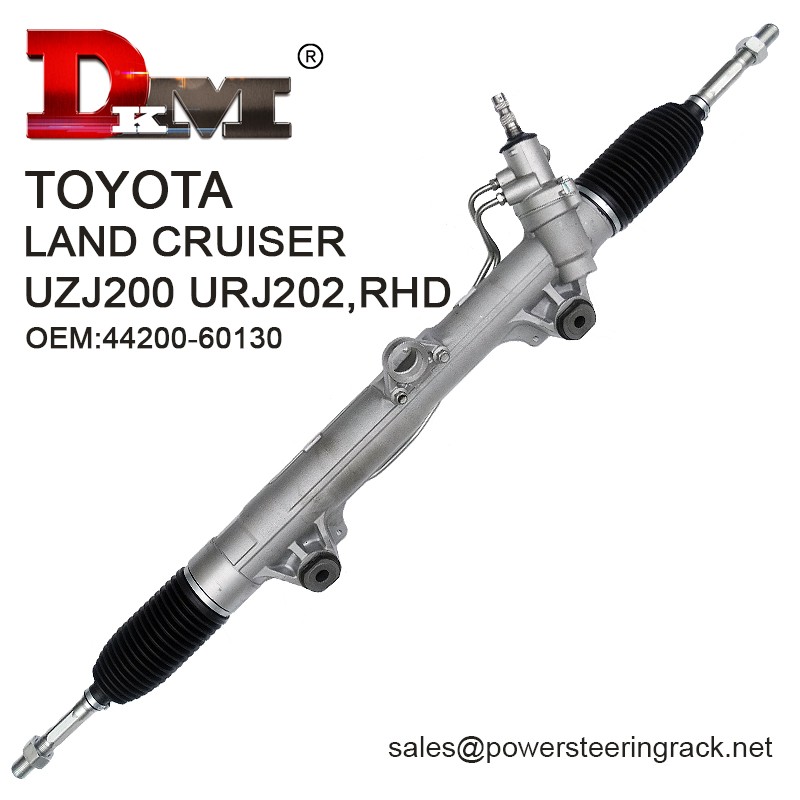
What are the common symptoms of power steering rack end failure?
The fault of the power steering rack end usually gradually manifests itself during the use of the vehicle. The owner can judge whether the rack end needs to be replaced by some obvious symptoms. Here are some common fault symptoms:
1. Steering wheel abnormal noise
The steering wheel makes abnormal noises when turning, especially "squeaking" or "banging" knocking sounds, which are often early signs of wear or damage to the power steering rack end. When the seals or lubricants at the rack end are lost, friction increases, causing wear between parts, which in turn causes abnormal noises. If this situation persists, it may mean that the rack end has been irreparably worn and must be replaced.
2. Steering becomes heavy or inflexible
The working principle of the power steering system is to reduce the turning resistance of the steering wheel through hydraulic or electric power assistance. If the rack end is worn or damaged, it may cause the hydraulic system to not provide enough power assistance, causing the steering to become heavy or inflexible. Especially at low speeds, the steering wheel will feel more laborious to turn. If you feel that the steering is not smooth or difficult during driving, the rack end may be the source of the problem.
3. Steering wheel deviation from normal position
If the steering wheel deviates from the center position without operation, or the wheel deviates during driving, this may be a sign of wear or damage at the rack end. Looseness or wear at the rack end can cause inaccurate steering angles of the wheels, causing the vehicle to deviate from the direction during driving. This phenomenon not only affects driving safety, but also causes uneven wear on the tires.
4. Oversteer or understeer
When there is a problem at the end of the power steering rack, the steering system may oversteer or understeer. Oversteer means that the wheel turns too much when the steering wheel is operated, while understeer means that the wheel does not turn enough. This phenomenon makes it difficult for the vehicle to accurately follow the driver's instructions, especially on highways or in tight turns, which may cause safety hazards.
5. Hydraulic oil leakage
If the seals at the rack end are aged or damaged, it may cause hydraulic oil leakage. Hydraulic oil leakage will affect the normal operation of the hydraulic power steering system, resulting in insufficient or complete loss of power during steering, which will cause the steering wheel to become heavy and difficult to drive. Leakage of hydraulic oil will not only affect the steering system, but also cause damage to other systems, so the leakage problem needs to be checked and dealt with as soon as possible.
6. Steering wheel vibration
If the steering wheel vibrates or shakes during driving, this may also be a sign of a problem with the rack end or other steering components. If the rack end is loose or damaged, it may cause the steering system to be unstable during driving, vibrate or jump.
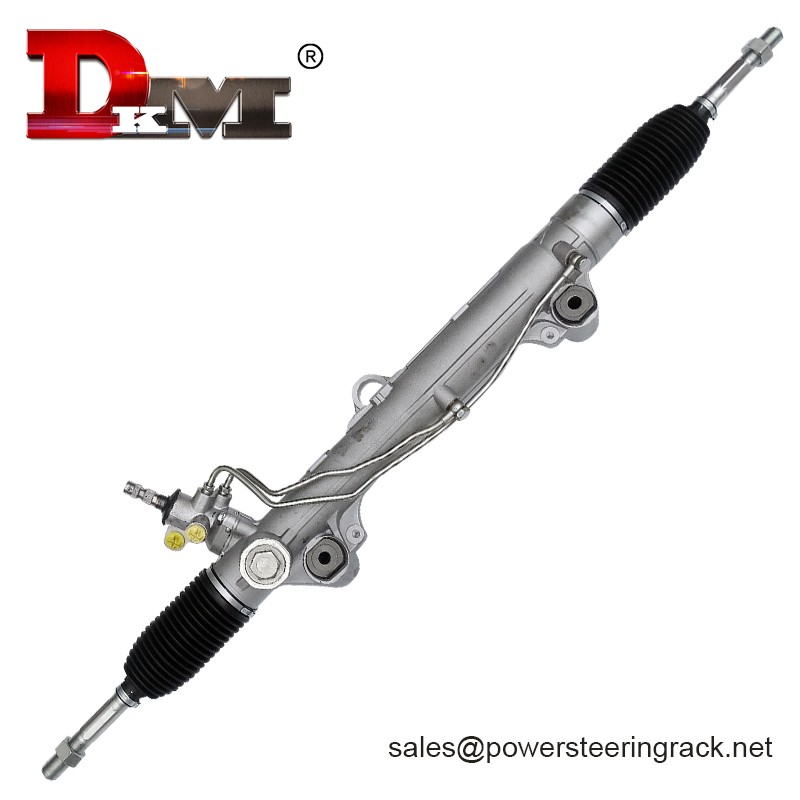
How to determine whether the rack end needs to be replaced?
Based on the above symptoms, car owners can determine whether the power steering rack end needs to be replaced in the following ways:
1. Listen to the sound
When the steering wheel makes an abnormal sound when turning, especially a "squeak" or "thump" sound, the owner should check the power steering system, especially the rack end. Professional maintenance technicians can make a preliminary judgment on the problem based on the type and location of the sound. If the sound persists and cannot be solved by simple lubrication or tightening, the rack end may be damaged and needs to be replaced.
2. Check the hydraulic fluid level
Low hydraulic fluid level may cause steering system anomalies, especially when the seal or rack end is damaged. Check the power steering fluid level. If the level is significantly lower than the normal range and drops rapidly in a short period of time, it may be caused by leakage at the rack end.
3. Check the response of the steering system
The owner can gently turn the steering wheel while driving at low speed to observe the response of the steering system. If the steering wheel feels heavy, inflexible or deviates from the normal position, there may be a problem with the rack end. In addition, check the sensitivity and accuracy of the steering. If the steering angle is inaccurate or the wheel is offset, the rack end should also be checked.
4. Professional inspection
If the above inspection fails to determine the problem, it is recommended that the owner send the vehicle to a professional auto repair station for inspection. By using special tools, technicians can more accurately check the wear of the rack end and determine whether it needs to be replaced. Common inspection methods include using hydraulic pressure testing, checking the various connecting parts of the steering system, and using high-precision instruments to check whether the steering system's response meets the standards.
How to prevent damage to the power steering rack end?
Although the power steering rack end may be worn or damaged after long-term use, car owners can effectively extend the service life of the rack end through daily maintenance and correct driving methods:
● Regularly check the steering system: Regularly check the power steering system, especially the hydraulic oil level and the condition of the seals, to ensure that the steering system is working properly.
● Avoid violent driving: Avoid sudden and violent steering or frequent slamming of the steering wheel, which can reduce the wear of steering system components and extend the service life of the rack end.
● Pay attention to road conditions: When driving on uneven or bumpy roads, try to avoid violent steering movements, as this will cause excessive pressure and wear on the rack end.
● Replace worn parts in time: Once an abnormality is found in the power steering system, it should be handled as soon as possible to avoid serious failure of the rack end due to long-term wear.
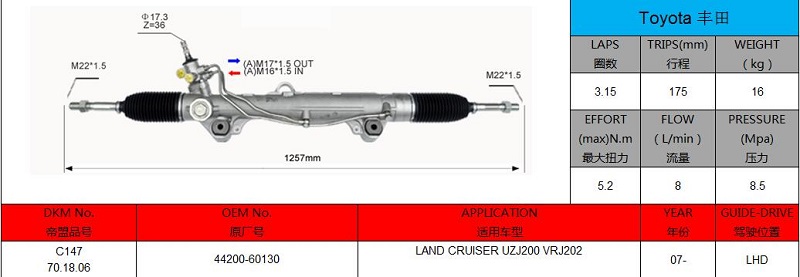
High-Quality Steering Gears Direct from the Manufacturer
Guangdong Diamond Auto Parts Co., Ltd. (DKM) is an experienced manufacturer and supplier of power steering gears, offering high-quality products at competitive prices. We provide steering systems for global vehicle brands like Toyota, Honda, and Mitsubishi, manufactured in our fully automated factory in Foshan. Our goal is to offer customized, cost-effective solutions that meet your specific requirements.
We offer promotions, discounts, and excellent customer service for bulk purchasing. Contact us to inquire about our low prices, quotes, and purchasing options.

